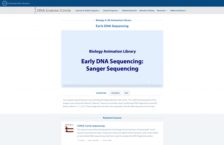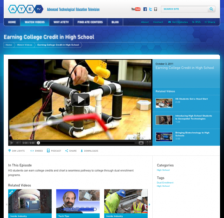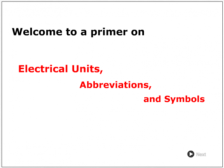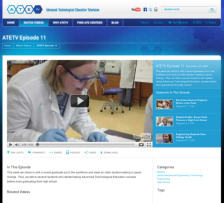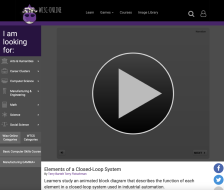Browse Resources
Application -- Flash
Resources |
|---|
This resource, provided by Maricopa Advanced Technology Education Center (MATEC), is a cut-away animation of a pneumatic dual rod cylinder. The objective of this resource is to show how the dual rod cylinder works. An .mp4 is also included and runs 01:00 minute in length.
Two sequencing techniques were developed independently in the 1970s. The method developed by Fred Sanger used chemically altered 'dideoxy' bases to terminate newly synthesized DNA fragments at specific bases (either A, C, T, or G). These fragments are then size-separated, and the DNA sequence can be...
ATETV continues to produce excellent web-based videos spotlighting advanced technical careers and educational programs. This video, part of the From High School to College series, shows how high school students can earn college credits and chart a seamless pathway to college through dual enrollment...
This tool from the United States Geological Survey provides an easy way to navigate a variety of data sets including aerial photography, AVHRR composites, declassified data, digital line graphs, digital maps and more. The tool also makes it easy to find the latitude and longitude for a given...
This resource, published by the Maricopa Advanced Technology Education Center (MATEC), is an animation that shows how load resistance results in increase in output power. An .mp4 is available for download and runs 01:40 minutes in length.
In this animated and interactive object, students view photos of an electric pencil sharpener as it is disassembled. The learning object is intended to prepare students to be able to identify the components and create an assembly process in a future activity.
In this animated and interactive object, students read an introduction to electrical quantities, units, and symbols and test their knowledge in a matching exercise.
The ATETV project delivers web-based videos to connect students to careers in advanced technology. This episode of ATETV examines the work of an electromechanical engineer, profiles student Susan Clark as she pursues a high-tech career, and high school students earning college credit by taking...
This is a free, 9:55 minute video posted on Teacher Tube about Electronics. It specifically addresses simple circuits. It covers an introduction to basic electronics such as Ohms Law, Kirchoff's Law, simple circuits, series and parallel circuits.
This interactive presentation, created by Terry Bartelt and hosted by the Electromechanical Digital Library, provides an explanation of how a closed loop system functions. Bartelt explains how "the function of a closed-loop system in industry is to automatically control the operation of a...
|
| ← PreviousNext → |

